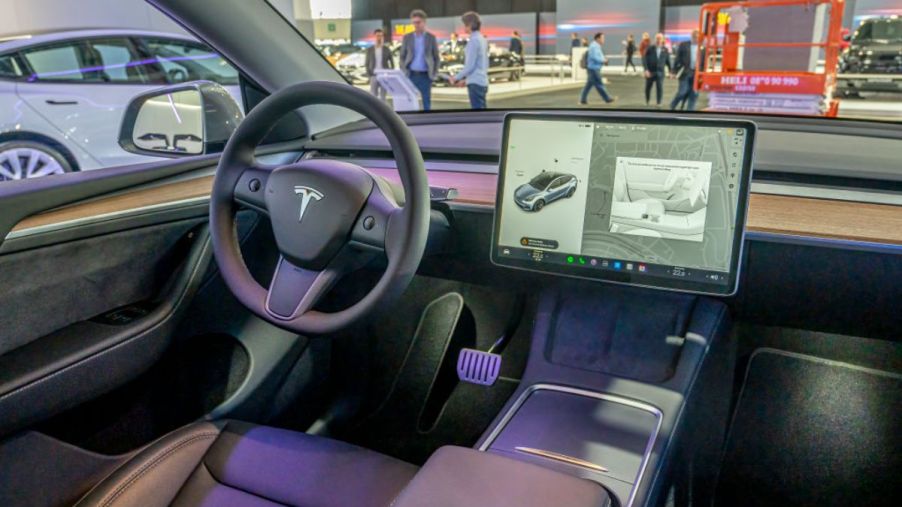
The Pros and Cons of Alcantara in Car Cabins
Alcantara is a popular material for car seats and interiors, particularly in luxury vehicles. You’ve likely seen and touched Alcantara if you’ve ever ridden in one of these vehicles. This synthetic material has become increasingly popular as a car interior option, rivaling traditional materials like leather and suede.
However, there are pros and cons to choosing Alcantara for your car’s interior. Let’s explore what Alcantara is, how it differs from other materials, and weigh the advantages and disadvantages of using it in the model you love to drive.

What is Alcantara?
First, you may be wondering what Alcantara is. Alcantara is a synthetic microfiber fabric that was first developed in the ’70s in Japan.
It’s made by blending polyester and polyurethane fibers to create a material that’s similar in look and feel to suede or natural leather but is more durable and lightweight. The Leather Dictionary states that Alcantara has a very fine fabric structure that looks and feels similar to suede, it is often mistaken for genuine leather. Unlike leather, though, Alcantara is non-toxic, hypoallergenic, and easy to clean, making it an ideal fabric for car interiors.
What are the advantages of Alcantara in cars?
There are many advantages to using Alcantara in car interiors. For starters, it’s very lightweight, which means it can reduce the overall weight of the vehicle. This may lead to better performance and fuel efficiency.
Additionally, Alcantara is extremely comfortable to sit on, so it’s a great option for car seats. It also simulates the look and feel of natural leather without the environmental impact and is incredibly fire-resistant.
The best part? Alcantara produces less waste than natural leather or suede during production, so it’s an excellent choice for eco-conscious car owners.
What are the disadvantages of Alcantara in cars?
While Alcantara has many benefits, there are some disadvantages to consider. One of the biggest complaints about Alcantara in cars is that it’s not great for areas that are touched often, like the steering wheel or door handles. This is because the material can be slippery, making it difficult to get a good grip.
Not only that, but Alcantara is also prone to absorbing the oils from your skin. The Drive states, “Line the ceiling and the car’s pillars with it. Roll it out over the dashboard under the windshield to cut down on glare. Put it in places where we can look but mustn’t touch.”
With this in mind, Alcantara is also more prone to trapping dirt and grime. This may cause the material to look dirty and worn over time.
Is it a good material for my vehicle?
Alcantara is an excellent material for car interiors and accessories, with many benefits over traditional leather and suede. However, just like other materials, it does have its downsides.
If you’re considering using Alcantara in your car, it’s important to weigh the pros and cons and decide if it’s the right choice for you. With the proper care and maintenance, Alcantara can help elevate the look and feel of your interior and provide a comfortable driving experience.



